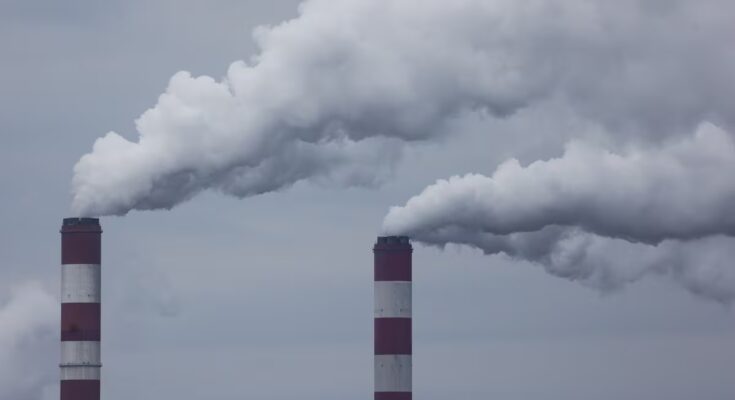Members of the Spanish People’s Party of the Environment, Climate and Food Safety Commission of the European Parliament aligned themselves this Monday with groups ultra opposed to community policies against climate change. Arguing that this is a difficult target to reach, Spanish PP MEPs – along with other members of the same party from Poland and other countries – voted against the EU’s new 2040 emissions reduction target.
Thanks to the fact that the majority of the European PP maintained its favorable vote, as well as the support of the socialists and other parties such as the Greens, the proposal was able to move forward; and the same should happen this Thursday with the vote in plenary. The text went forward with 55 votes in favor and 32 against, including those of the two European parliamentarians of the Spanish PP present in the commission, Esther Herranz García and Susana Solís Pérez.
The objective is to reduce greenhouse gas emissions from the EU economy by 90% by 2040 compared to 1990 levels. Numerous flexibilities have been introduced towards this objective to overcome the resistance of several European governments in which the advance of the far right is pushing them to move away from environmental policies.
To make this goal official, it will be included in the European Climate Law and will form the basis of the climate plan that Europe has presented to the United Nations. The EU has always been one of the most active actors at UN climate summits, such as the one that opened on Monday in the Brazilian city of Belém, the same day the controversial vote took place. This year’s event is being celebrated at the worst moment in the international fight on the climate, due to the advance of denialism at the hands of Donald Trump and other ultra groups in many parts of the planet.
Europe is no stranger to this wave, which was largely responsible for the EU’s failure to deliver its climate plan on time. But at the last minute before the start of the summit, the Twenty-Seven reached an agreement to try to save face at the Belém meeting. The Spanish PP, however, on Monday positioned itself against this pact and against the objective on which the European climate plan is based, as did the EU’s far right. Meanwhile, the People’s Party is trying to shut down a new government in Valencia with Vox, a denialist group whose goal is to end European climate policies.
The 90% target.
Greenhouse gas emissions, responsible for climate change and mainly linked to fossil fuels, had already fallen by 35% in 2024 compared to 1990 levels across the Union as a whole. The need to achieve a 90% reduction in cuts within 15 years does not arise out of nowhere. The European Scientific Advisory Council on Climate Change, an official EU body, published a report in June 2023 detailing that if international commitments to fight global warming were to be met, the EU27’s gases would need to decline by between 90% and 95% in 2040. Experts have ruled out the possibility of using flexibility to achieve that goal.
Subsequently, the European Commission that emerged after the June 2024 elections presented its proposal, in which it already accepted the lower part of the range, proposing that the target remain at 90%. Furthermore, this proposal, presented in July this year, already provided an important safety cushion for countries: it allowed that “high-quality international carbon credits” could be used to achieve the goal. That is, instead of absolute reductions in gas emissions, some sectors could resort to purchasing emission rights outside the EU, such as those generated by forestry projects.
This possibility is already contemplated in Article 6 of the Paris Agreement, a section that took many years to develop due to its controversial nature and the fear that these offsets have no real effect on the fight against the climate, or that they lead to double counting. In its proposal, Brussels set a limit: offsets can only cover a maximum of the equivalent of 3% of the EU’s net emissions in 1990.
But negotiations in Europe are a matter of three. The position of the other two fundamental actors remained to be known: the Council (where the Governments of the Twenty-seven sit) and the European Parliament. After a discussion that seemed to never end, the Council approved its position on November 5: it accepted the 90% target, but added even more possibilities, as it raised the possible purchase of emission rights to 5%.
At the same time, in the Industry, Research and Energy Committee of the European Parliament, the third actor that had to take a position, last week voted in favor of the 90% target with 3% flexibility. Community sources explain that the Spanish PP has already taken a stand against it. Finally, this Monday, in the Environment Commission, it was decided to touch on this proposal and to increase the credits to 5% to align with the Council and be able to unblock this reform once and for all. Despite everything, the members of the Spanish PP decided to maintain their vote against.
The reform of the Climate Law to provide for a 90% cut by 2040 is the basis of the climate plan presented to the UN by the European Union in compliance with the Paris Agreement. This pact requires that every five years the almost 200 countries that are part of this treaty must present plans with specific objectives for reducing their gases, known by the acronym NDC in the jargon of climate diplomacy. The new NDCs were supposed to be sent in February this year, but there has been massive non-compliance, including from the EU.
Finally, in the last minutes before the Belém summit, Europe reached a consensus position on the Climate Law which allowed the presentation of the NDC. This plan must set, according to the internal rules of the Paris Agreement, the objective for 2035, but for this it was essential to have a clear route for the next 15 years. Europe’s fragile position is now also reflected in the target presented in the NDC: instead of a concrete cut, a reduction range of between 66.25% and 72.5% by 2035 is promised.


